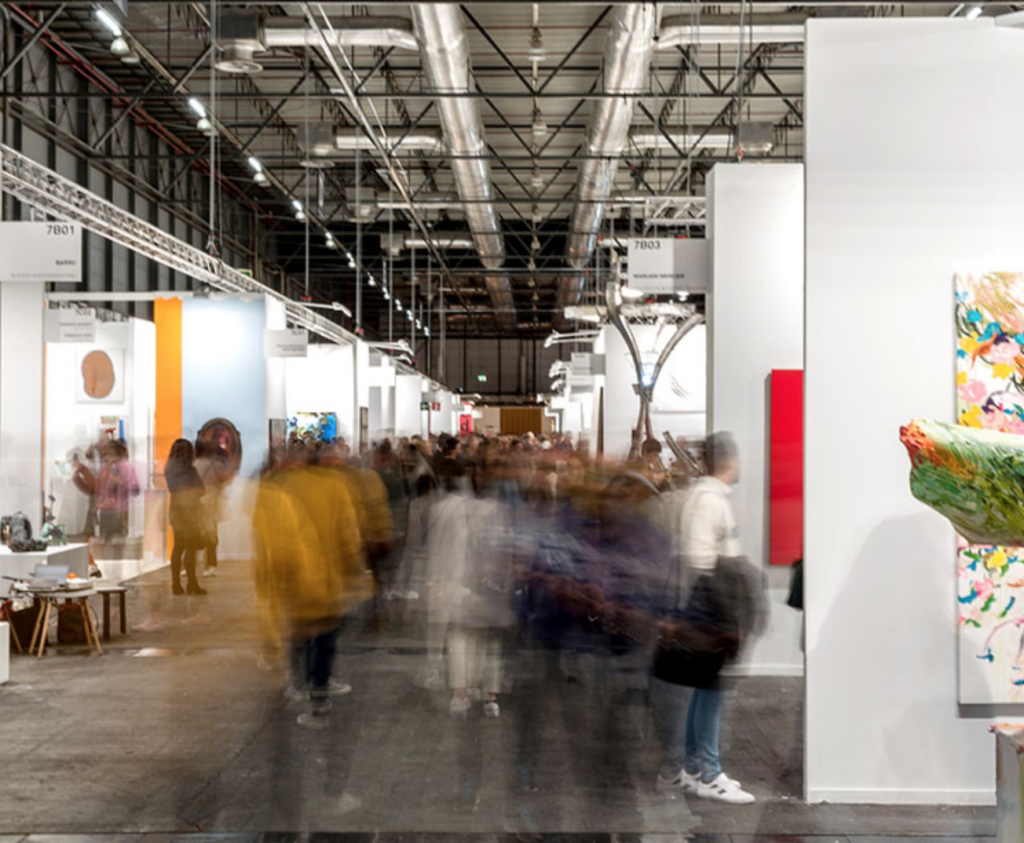‘If Fairs Are Successful, Then Everybody Wins’: Maribel Lopez, ARCOmadrid’s New Director, on Why Fairs Are Still Irreplaceable


Sophie Neuendorf

Amid the numerous conversations about persistent gender wage inequality and gaps in leadership roles, it comes a pleasant surprise that nearly all of the directors of Spain’s leading art fair ARCOmadrid have been women — among this lot is Maribel Lopez, the fair’s new Director, whose inaugural edition will kick off on February 26. Before her inaugural edition, I sat down with Lopez to chat about her vision for the fair and the market as a whole.
How does it feel to be in this new position as director of such a storied fair?
I’ve been working in the art world forever. It’s all I’ve ever done. But this is a huge responsibility and unlike anything I have worked on before — the attention to detail, the responsibility— it’s a completely new experience. But I am enjoying it immensely. My team and I are working very hard, but having a great time shaping this edition of ARCO.
What are you planning to change or do differently than in previous editions?
In many ways, I’ve already been on board with the direction the fair has been going over the past few years. So, there is not anything that I would radically change. I also believe that an art fair needs to have continuity and feel stable. I want it to resonate with galleries and collectors as opposed to projecting my personality too much — it’s about them, not me.
However, I am introducing a few new features this year and in the future. Rather than inviting a guest country as we have in the past, now we are focusing on the career of a single artist. This year, we are honoring Cuban-American artist Felix Gonzalez-Torres, who really introduced essential new concepts to art-making and opened up conversations about death and intimacy. Working during the height of the AIDS crisis, he conveyed the loss of his partner, Ross Laycock, through a variety of emotionally charged objects.
I’ve also invited several artists to participate in our panels — hearing an artist speak about their work seems the best way for our collectors and visitors to understand contemporary art. The dialogue between artists and curators in this context will hopefully foster greater understanding and more conversation around contemporary art and its future.
The more time we devote to learning about art, thinking about art, and the creation of art the more we connect with it. I think that having this as the foundation of the fair is very important and will positively impact the growth of the market.

Courtesy of ARCOmadrid.
How do you feel about the digitalization of the art market?
I am a strong proponent of the importance of seeing an artwork in person. The online experience seems too distant. And this is what art fairs provide; a place where visitors can connect and speak about a piece they are seeing at ARCO. I think that if fairs are successful, then everybody wins. However, given the direction the art world is moving, we are trying to grow digitally while still staying true to the “live experience.”
Zwirner, for example, recently launched an online viewing room and has spoken about the possibility of connecting with collectors via social media. Is this also something that you are hesitant about?
Even while I will always fight for collectors to visit the fair — not only for the business but also for the sake of art— of course we are looking for ways to remain a part of the zeitgeist.
It’s important to remember that art fairs offer a different experience for art lovers than, for example, auctions or purchasing online. It’s about connecting with other collectors, creating room for dialogue, and experiencing the works on view. As such, we will become digital-only as far as it doesn’t encroach on this sensibility.
Do you feel that one should subsidize younger galleries to enable them to participate in international art fairs, such as ARCO?
Yes, and this is an important tradition at ARCO. We spearheaded a “Young Galleries” section in 2011 — I was the first curator of this section, so it’s very close to my heart. This year, we will welcome 21 young galleries. Given the risk they take and the cost of entry into the market, they really need support and we try to give this to them as much as possible.
How do you feel Spain’s new government will impact the arts?
We will have to see what they do. We hope that speaking with the minister of culture about tax benefits in the arts will attract new collectors and have a positive impact on the market.
How will you attract a younger generation of collectors?
It’s really one of our most pressing subjects. We’re trying to find an organic way to connect with millennials. Every step we take we discuss with our galleries and work hand in hand with them to attract a younger audience. We’re hosting events with our galleries and young professionals throughout the year and are looking into ways to reach them via social media.
Where do you think the trend is going in terms of young collectors?
Generally, paintings are always very popular. It’s easier for new collectors to enter into the art market with paintings than, say, sculpture. Also, drawings and photography are formats that attract a younger audience.
If you could have dinner with any three artists living or dead, who would they be?
Well, I really can’t decide! There are so many. But this year we are devoting the fair to Felix Gonzalez-Torres, so perhaps him? Among many others if I could!